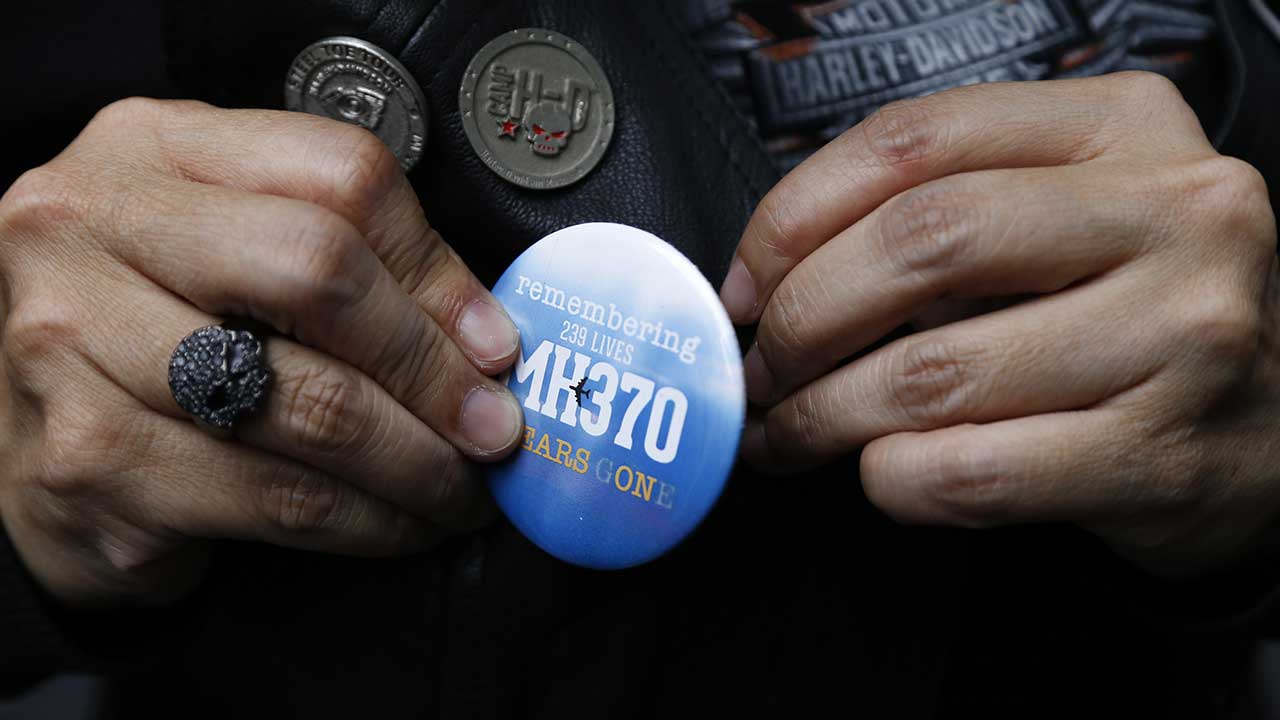New theory in disappearance of flight MH370

A retired British aerospace engineer believes he has solved the mystery of the missing Malaysia Airlines flight MH370.
In 2014, the plane, piloted by Captain Zaharie Ahmad Shah, disappeared with 239 people on board while flying from Beijing to Kuala Lumpur. No trace of the aircraft has ever been found.
Talking to The Times, Richard Godfrey revealed that he’s been working on unraveling the mystery for a long time. “I’ve been plodding away for eight hours a day for seven years,” he said. “In that sort of time you can get a lot done.” In that time, he has accumulated a wealth of data on satellite communications, long-range radio signals, oceanic drift, underwater search technology, and flight simulations.
Godfrey believes he has pinpointed the location of the wreckage: on the seabed 1900km west of Perth, in the complete opposite direction of where its flight path would place it.
He believes the pilot had a political motive for his actions, suggesting that Zaharie was reacting to the sentencing of Malaysia’s opposition leader to five years in prison. The day before the plane took off, opposition leader Anwar Ibrahim was sentenced to five years in prison on sodomy charges. Godfrey believes that as a supporter of Ibrahim’s, the sentencing may have been enough to drive Zaharie to take passengers hostage. "My current view is that the captain hijacked and diverted his own plane,” he added.
However, he admits that he has no evidence for these claims, describing his views as “speculation”.
The key, for Godfrey, appears to be the 22-minute holding pattern which the plane entered off the coast of Sumatra. He believes that these 22 minutes were spent by the pilot attempting to negotiate Ibrahim’s release. He said, "Maybe somehow that negotiation went wrong and he ends up flying to the remotest part of the southern Indian Ocean.”
The situation is made worse by the Malaysian military’s refusal to release radar date, allowing armchair theorists to attempt to fill in the gaps. Godfrey told The Times, "To me, it is clear there is still certain information being withheld, principally by the Malaysian government."
It is known that Zaharie pre-planned his unusual route on a flight simulator at home, fuelling the theory that the vanishing was premeditated.
Godfrey has used radio signals that act like ‘trip-wires’ to help him locate the wreckage, which he says lies 3900m below the surface of the ocean, at the base of what is known as the Broken Ridge, an underwater plateau with a volcano and ravines in the southeastern Indian Ocean.
He described the tracking system known as Weak Signal Propagation Reporter (WSPR) as like having a "bunch of trip-wires that work in every direction over the horizon to the other side of the globe."
Godfrey combined this new technology with satellite communications system data from the plane, explaining that, “Together the two systems can be used to detect, identify and localise MH370 during its flight path into the Southern Indian Ocean."
The retired engineer says he is “very confident” he has found the missing plane. "We have quite a lot of data from the satellite, we have oceanography, drift analysis, we have the performance data from Boeing, and now this new technology," he explained. "All four align with one particular point in the Indian Ocean."
Image: Adli Ghazali/Anadolu Agency/Getty Images
